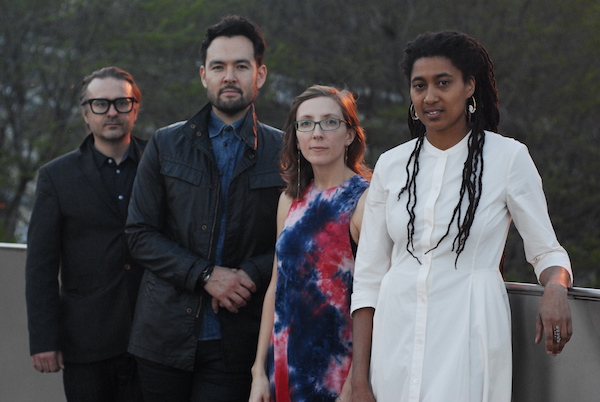Oct 28, 2025 10:47 AM
In Memoriam: Jack DeJohnette, 1942–2025
Jack DeJohnette, a bold and resourceful drummer and NEA Jazz Master who forged a unique vocabulary on the kit over his…

Tomeka Reid (right) is among the 25 artists DownBeat thinks will help shape jazz in the decades to come.
(Photo: Jasmine Kwong/Cuneiform)Cellist Tomeka Reid remembers when she started telling people about her quartet. Not everyone was encouraging about its atypical lineup. She was taken aback at the time, but laughs about it now.
Like its self-titled predecessor, the lively compositions on the second album from her group, 2019’s Old New (Cuneiform), allow guitarist Mary Halvorson, bassist Jason Roebke and drummer Tomas Fujiwara to explore dissonance and feedback while also swinging relentlessly.
“We’re just an even better team than before,” Reid said. “I was able to write with them more in mind for this record. While the first time I had all the tunes written, this time I was thinking about many different sounds for them.”
Until the pandemic hit, Reid had a full slate for 2020, including recording plans, which have been tabled for now. But she’s had to move her spate of Mills College classes online.
“A lot of times in programs, you study people who you can’t really access,” Reid said. “It was exciting for me to be an access point for students. I taught a composition seminar, and when they have questions about the score, we could call the composers up.”
Along with her commitment to teaching and long-term collaborations, Reid sought new ventures just before the pandemic. This spring, she released a duo album with British pianist Alexander Hawkins, Shards And Constellations (Intakt). Their conversation builds on a compatible sense of tension that flows into quiet lyricism on their interpretation of Muhal Richard Abrams’ “Peace On You.”
“I’m always looking for situations to challenge myself and just playing duo in that way is very exposed,” Reid said. “Being so exposed, what would my role be? How are we going to interact? How are we going to make a whole album interesting—is it going to be freely improvised, different sounds, or do anything harmonically based? That’s always the challenge.”
Reid’s explorations, especially during the past few years, have involved complementary string instruments. She traveled to Ethiopia in 2018 and 2019 where she learned about the masenqo, a single-stringed lute that typically reflects different rhythms based on region. Reid also doubled on banjo for Nicole Mitchell’s Mandorla Awakening II: Emerging Worlds.
Still, Reid remains an outspoken cello advocate. Winner of the Miscellaneous Instrument category in the DownBeat Critics Poll for 2019 and 2020, she contends that the cello deserves its own category.
“Every band needs a cello player,” Reid said. “It gives a different nuance to low-end than just the bass—it increases the richness of the environment to have that other strong voice that can go into the mid-range, the high-range, go low. It can cover so much ground, and people are discovering it more. There are also more musicians interested in improvising. They may not have all the language together, but if you don’t mind investing the time, you can really have something different.” DB
This story originally was published in the November 2020 issue of DownBeat. Subscribe here.

Jack DeJohnette boasted a musical resume that was as long as it was fearsome.
Oct 28, 2025 10:47 AM
Jack DeJohnette, a bold and resourceful drummer and NEA Jazz Master who forged a unique vocabulary on the kit over his…

D’Angelo achieved commercial and critical success experimenting with a fusion of jazz, funk, soul, R&B and hip-hop.
Oct 14, 2025 1:47 PM
D’Angelo, a Grammy-winning R&B and neo-soul singer, guitarist and pianist who exerted a profound influence on 21st…

To see the complete list of nominations for the 2026 Grammy Awards, go to grammy.com.
Nov 11, 2025 12:35 PM
The nominations for the 2026 Grammy Awards are in, with plenty to smile about for the worlds of jazz, blues and beyond.…

Jim McNeely’s singular body of work had a profound and lasting influence on many of today’s top jazz composers in the U.S. and in Europe.
Oct 7, 2025 3:40 PM
Pianist Jim McNeely, one of the most distinguished large ensemble jazz composers of his generation, died Sept. 26 at…

Drummond was cherished by generations of mainstream jazz listeners and bandleaders for his authoritative tonal presence, a defining quality of his style most apparent when he played his instrument unamplified.
Nov 4, 2025 11:39 AM
Ray Drummond, a first-call bassist who appeared on hundreds of albums as a sideman for some of the top names in jazz…






